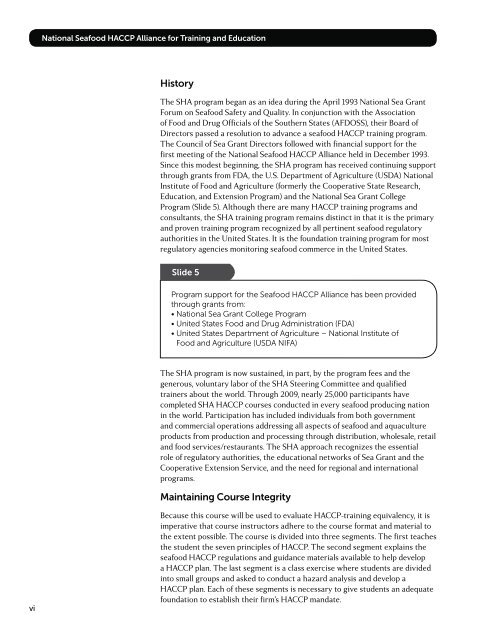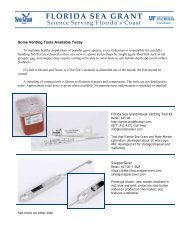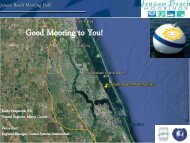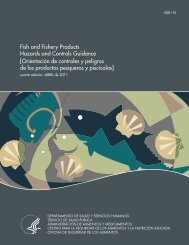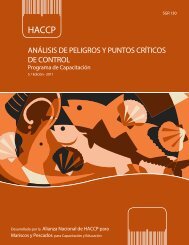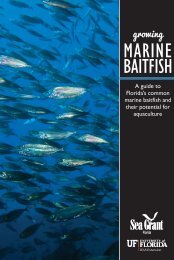HACCP
Hazard Analysis and Critical Control Point - Florida Sea Grant
Hazard Analysis and Critical Control Point - Florida Sea Grant
- No tags were found...
Create successful ePaper yourself
Turn your PDF publications into a flip-book with our unique Google optimized e-Paper software.
National Seafood <strong>HACCP</strong> Alliance for Training and Education<br />
History<br />
The SHA program began as an idea during the April 1993 National Sea Grant<br />
Forum on Seafood Safety and Quality. In conjunction with the Association<br />
of Food and Drug Officials of the Southern States (AFDOSS), their Board of<br />
Directors passed a resolution to advance a seafood <strong>HACCP</strong> training program.<br />
The Council of Sea Grant Directors followed with financial support for the<br />
first meeting of the National Seafood <strong>HACCP</strong> Alliance held in December 1993.<br />
Since this modest beginning, the SHA program has received continuing support<br />
through grants from FDA, the U.S. Department of Agriculture (USDA) National<br />
Institute of Food and Agriculture (formerly the Cooperative State Research,<br />
Education, and Extension Program) and the National Sea Grant College<br />
Program (Slide 5). Although there are many <strong>HACCP</strong> training programs and<br />
consultants, the SHA training program remains distinct in that it is the primary<br />
and proven training program recognized by all pertinent seafood regulatory<br />
authorities in the United States. It is the foundation training program for most<br />
regulatory agencies monitoring seafood commerce in the United States.<br />
Slide 5<br />
Program support for the Seafood <strong>HACCP</strong> Alliance has been provided<br />
through grants from:<br />
• National Sea Grant College Program<br />
• United States Food and Drug Administration (FDA)<br />
• United States Department of Agriculture – National Institute of<br />
Food and Agriculture (USDA NIFA)<br />
The SHA program is now sustained, in part, by the program fees and the<br />
generous, voluntary labor of the SHA Steering Committee and qualified<br />
trainers about the world. Through 2009, nearly 25,000 participants have<br />
completed SHA <strong>HACCP</strong> courses conducted in every seafood producing nation<br />
in the world. Participation has included individuals from both government<br />
and commercial operations addressing all aspects of seafood and aquaculture<br />
products from production and processing through distribution, wholesale, retail<br />
and food services/restaurants. The SHA approach recognizes the essential<br />
role of regulatory authorities, the educational networks of Sea Grant and the<br />
Cooperative Extension Service, and the need for regional and international<br />
programs.<br />
Maintaining Course Integrity<br />
vi<br />
Because this course will be used to evaluate <strong>HACCP</strong>-training equivalency, it is<br />
imperative that course instructors adhere to the course format and material to<br />
the extent possible. The course is divided into three segments. The first teaches<br />
the student the seven principles of <strong>HACCP</strong>. The second segment explains the<br />
seafood <strong>HACCP</strong> regulations and guidance materials available to help develop<br />
a <strong>HACCP</strong> plan. The last segment is a class exercise where students are divided<br />
into small groups and asked to conduct a hazard analysis and develop a<br />
<strong>HACCP</strong> plan. Each of these segments is necessary to give students an adequate<br />
foundation to establish their firm’s <strong>HACCP</strong> mandate.


